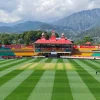Overview
The legendary city of Amritsar, which is home to the magnificent Golden Temple, captures the valiant nature of Punjab. Amritsar, the second-largest city in the Indian state of Punjab, is often known as Ambarsar in everyday speech. Amritsar, in addition to the Golden Temple, is renowned for its mouthwatering street food.
The Sikh religion’s spiritual and cultural centre is Amritsar. With its finest cuisine, attire, and celebration, the Baisakhi festival reveals Amritsar’s radiant face. Additionally, this location is well-known for the Jallianwala Bagh Massacre and for being close to the Wagah Border. Amritsar has endured the worst of circumstances—from Operation Blue Star in the Golden Temple to the horror of the Jallianwala Bagh massacre—and has nevertheless managed to rise above them like a phoenix through difficult times. Today, Amritsar is a thriving city with a burgeoning trade and tourism sector.
In this serene city, a day begins with the spiritual invocations of Gurudwaras. The original name, which translates to “pool of ambrosial nectar,” was first given to the old lake, then to the temple complex, and finally to the surrounding city.
Amritsar, one of India’s most productive agricultural cities, has good connections to the majority of the country’s major cities.
Top Places To visit in Amritsar
1. Golden Temple
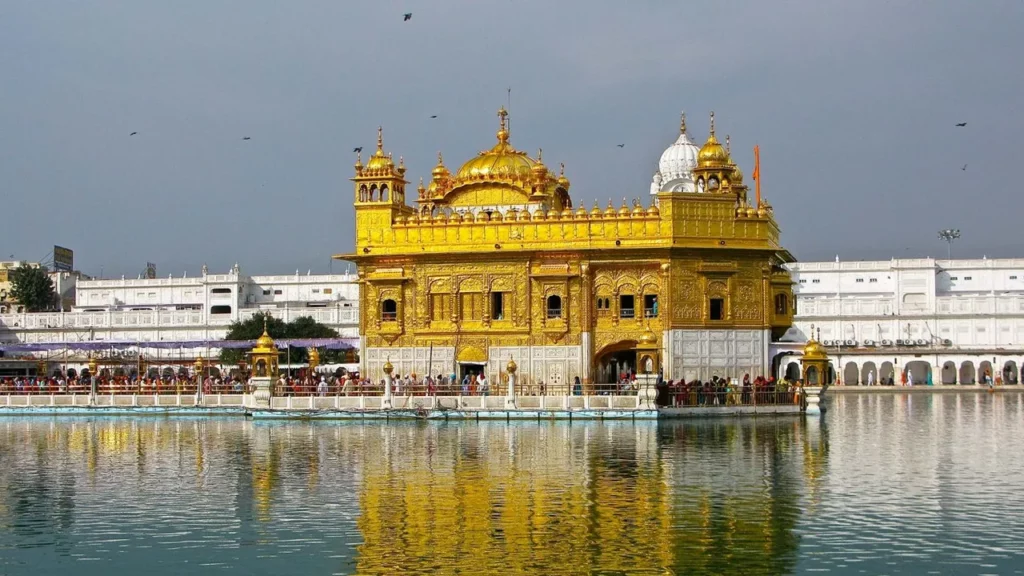
The Golden Temple, also known as Sri Harmandir Sahib, is one of India’s most spiritual locations and the most important Sikhism site. The spectacular golden architecture of the temple, which is located in the centre of Amritsar, as well as the daily Langar (community cooking), draw a lot of tourists and worshippers every day. Over 100,000 people from all walks of life receive free food at the temple, which is accessible to followers of all religions.
A small portion of the enormous complex known to Sikhs as Harmandir Sahib or Darbar Sahib contains the main Temple, which houses the shrine. The Amrit Sarovar, a tank that surrounds the sparkling centre shrine, serves as the area of spiritual emphasis. There are more shrines and memorials dotted around the perimeter of the complex. The Sikh Museum, which depicts the tyranny the Sikhs faced at the hands of the Mughals, the British, and the Indian Government of 1984, is housed inside the main entry clock tower. Two minarets in the Islamic architectural style encircle the Ramgarhia Bunga, a protective stronghold that is situated at the southeast end of the tank. Unquestionably one of the most stunning tourist destinations in the world is the Golden Temple.
2. Jallianwala Bagh
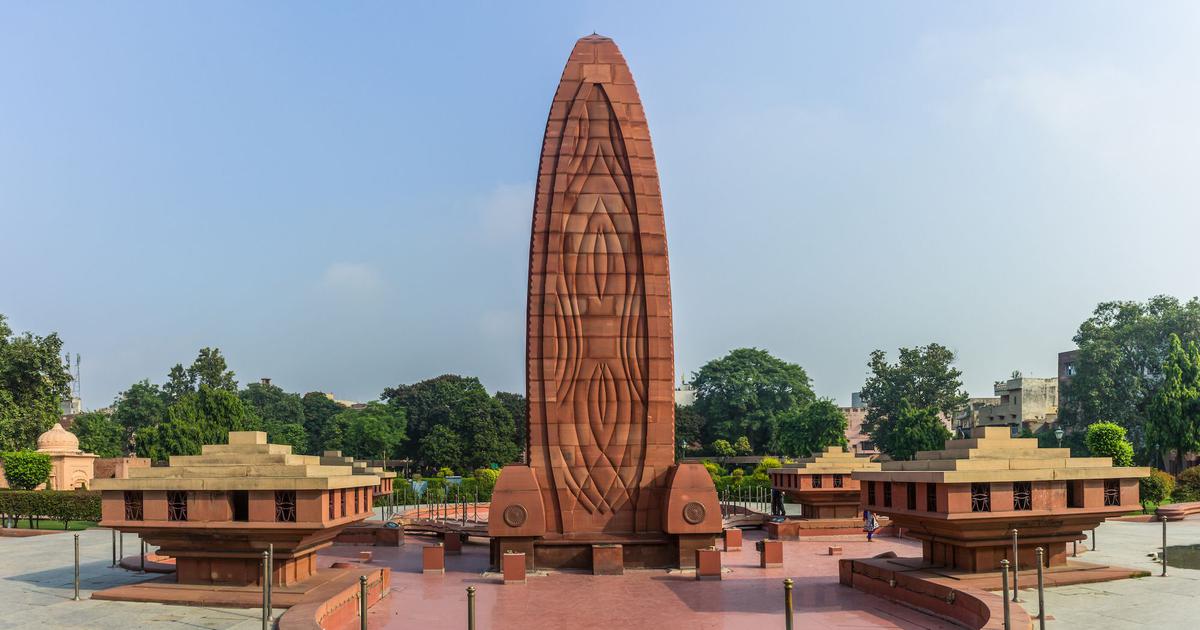
Jallianwala Bagh is a public garden that also has a memorial to remember the British forces’ slaughter of peaceful revellers, and it is situated close to the well-known Golden Temple of Amritsar. Jallianwala Bagh, which spans 6.5 acres of land, is known for being the site of one of the most tragic days in Indian history, when General Dyer ordered the killing of thousands of peaceful Baisakhi celebration participants. The Jallianwala Bagh National Memorial Trust oversees the area, which has been transformed into a lovely park.
At the entrance is a memorial tablet that serves as a historical record. After the country gained its independence, a memorial was built for the innocent people who lost their lives in the tragic incident because it left such a lasting impression on the nation. The massacre memorial was built by the Indian government in 1951 and opened by Dr. Rajendra Prasad on April 13, 1961.
There are several buildings inside the site that serve as reminders of the atrocities that took place there. The bullets that were hurled irrationally at the population still leave their marks on a wall, and many individuals ran into a well to escape the onslaught of the gunfire. Over a thousand Hindus, Muslims, and Sikhs are thought to have died in this vicious attack. Here, a tiny street with a significant historical significance runs through. The Jallianwala Bagh still exudes an eerie stillness that induces an inexplicable sense of melancholy and tranquillity.
3. Wagah Border
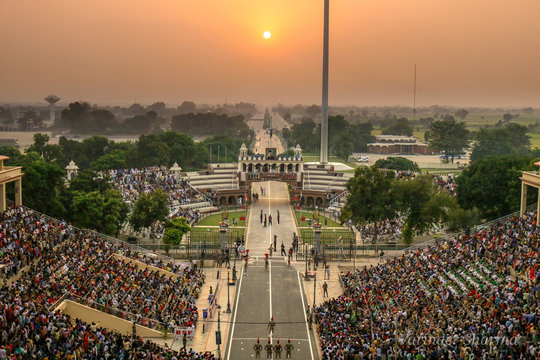
The Wagah Border, which separates India and Pakistan along the Grand Trunk Road, is situated 22 kilometres from Lahore, Pakistan, and 28 kilometres from Amritsar, India. The main draw is the daily Beating Retreat Ceremony, also known as the Wagah Border Ceremony. At this border checkpoint, the Indian and Pakistani militaries gather every evening just before dusk for a 30-minute performance of military comradery and showmanship.
The international gates are shut during this event, and both national flags are lowered. Since 1959, the Indian Border Security Force and Pakistan Rangers have conducted the flag ceremony.
As a show of pride in their country for the tens of thousands of visitors who come here every day, locals also participate in entertainment. The Indian national anthem is chanted, there are waves of clapping, and Bollywood-style dancing to Hindi tunes as the crowd gets ready for the ceremony.
Times for the Wagah Border Parade
Winter and summer times for the Beating Retreat Ceremony are 4:15 PM and 5:15 PM, respectively. It goes on for roughly 45 minutes. You must arrive at least an hour before the event because not everyone can get in. You don’t have to show up before 3:00 PM to see the event, however the border gate is open from 10:00 AM to 4:00 PM.
4. Maharaja Ranjit Singh Museum
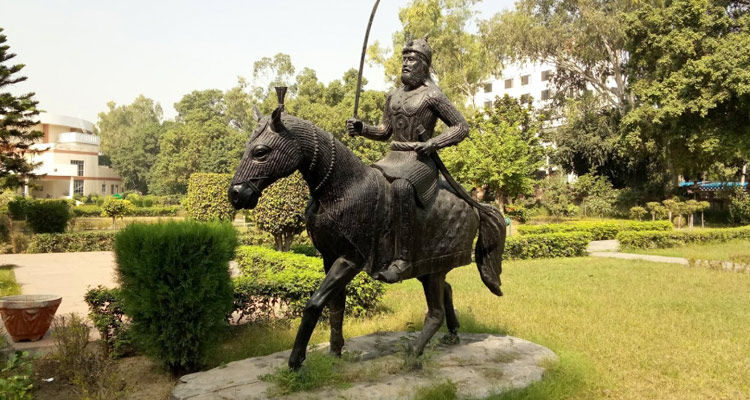
In Amritsar’s Company Bagh, there is a museum called the Maharaja Ranjit Singh Museum. The museum is named after Maharaja Ranjit Singh, the first king of the Sikh Empire, and it served as his summer home. The museum now offers information about the Maharaja’s life in addition to the 18th and 19th century Sikh community’s history, art, and architecture. The Golden Temple is roughly 4 km away and Amritsar Junction is about 1.5 kilometres from the museum.
The museum, which was transformed into a museum in 1977, has many treasures and private possessions of the Maharaja, including his armour and weapons. Fantastic artwork, numerous manuscripts, and old coins from various ages are also on show. This is a reflection of the Maharaja’s secular nature and the lengthy history of the Sikh region. The majority of the paintings show scenes from the palace and camp of the Sikh ruler. The one showing the city of Lahore is the one that is most well-known to onlookers out of all of them. The renowned Rambagh Gardens, known for its statue of the fabled monarch and his horse, surround the palace.
5. Shri Ram Tirth Temple,
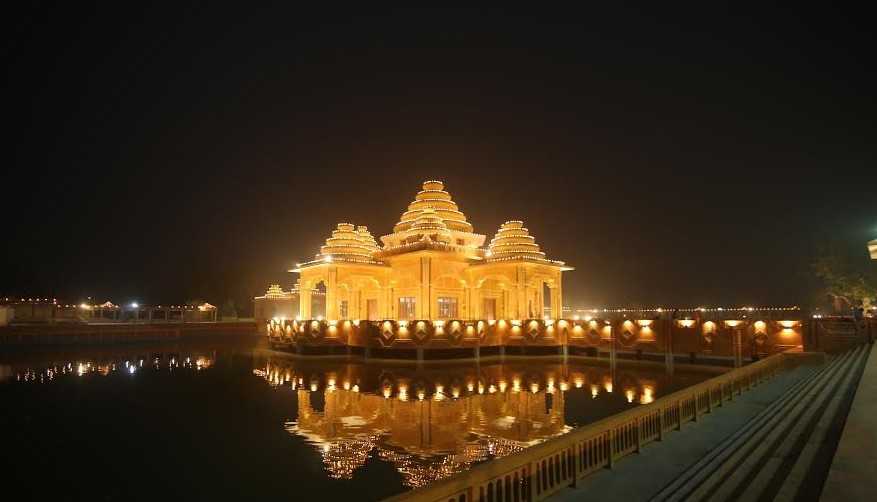
The Luva-Kusha, the twins of Rama and Sita, were born in the area where the Shri Ram Tirth Temple is now located. The temple, which is made of lime-yellow stone, was built during the time when Sita was abandoned by Rama and taken to the Ashram of Balamiki. It is stated that this is where Ram’s Ashwamedha troops and Luv-Kush fought. Visitors to the temple regard the twins’ gurukul, which is located inside its grounds, as a work of wonder in architecture.
A fortnight after Diwali, the historic temple hosts a 5-day fair when around one lakh visitors come to receive blessings. On Purnamashi night, devotees swim in the historic tank next to the temple. On Purnamashi night, people follow the custom known as Tulla Torana, in which light lamps made of kneaded flour and ghee are cast into the water. This tradition’s observance is thought to atone for sins and satisfy Lord Rama.
There is a peculiar concept that the trip is incomplete without providing food or cash donations to the less fortunate. Acrobats and magicians perform throughout the five-day event, and small amusement park rides like merry-go-rounds and the huge wheel are set up close to the temple.




